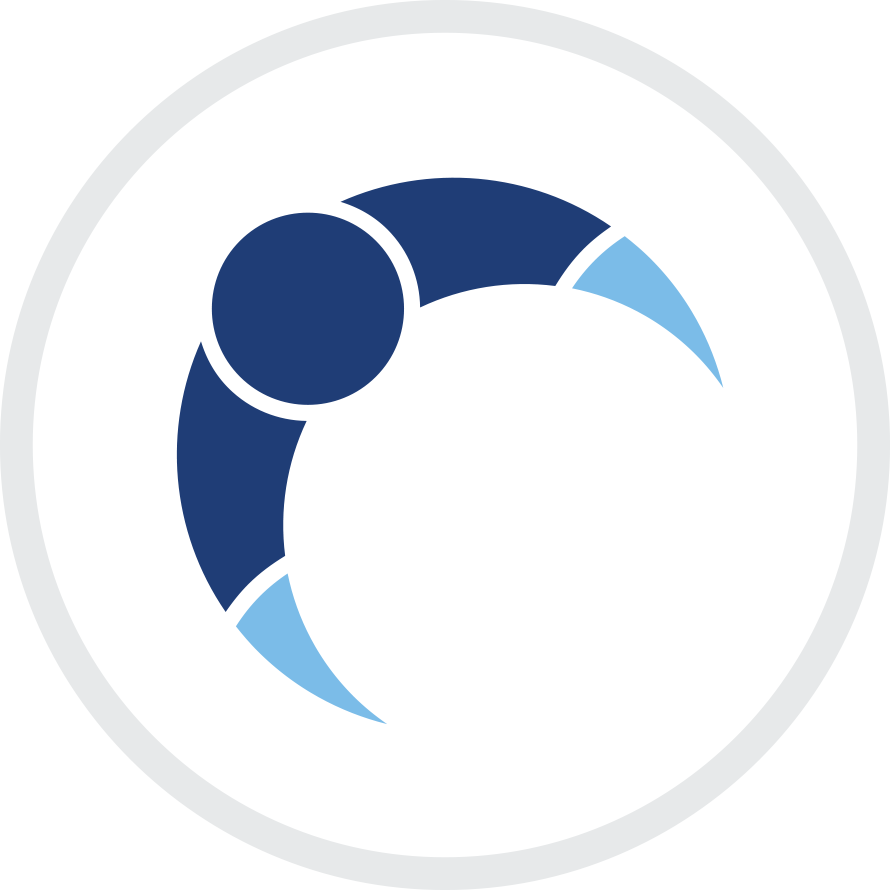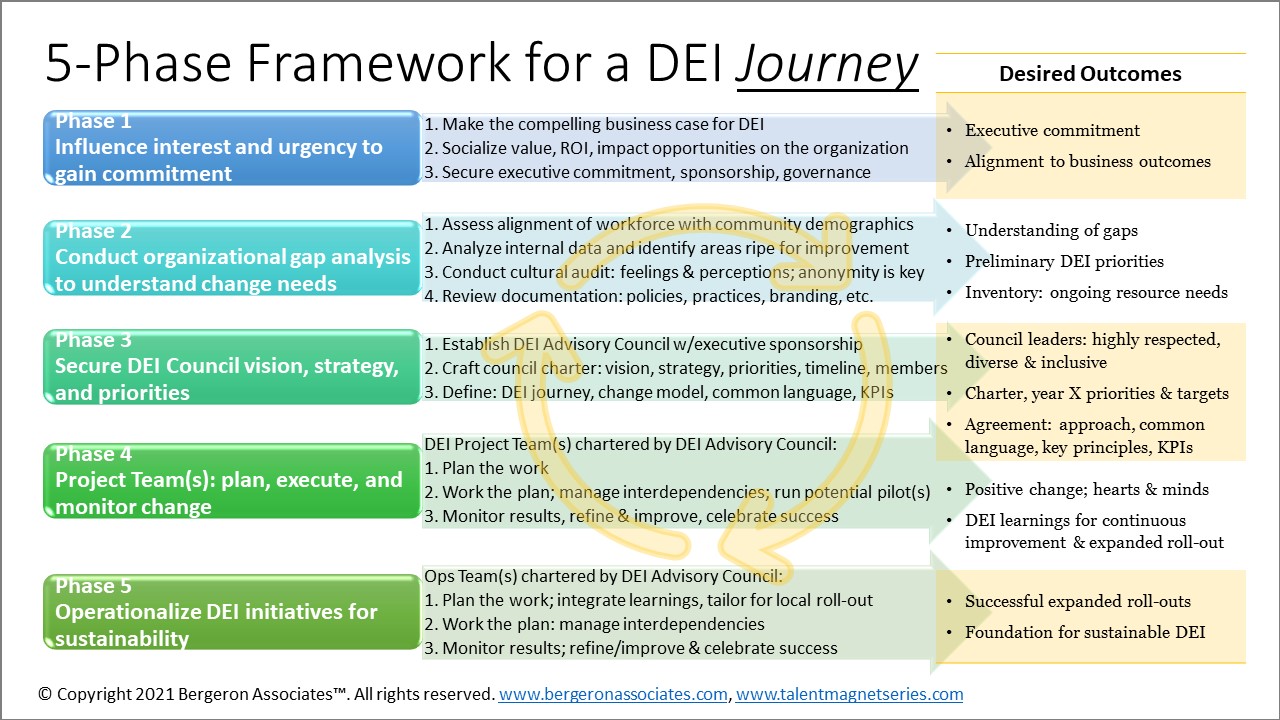
Diversity, equity, and inclusion (DEI) research and articles are abundant and insightful. And rightly so given DEI’s importance to individuals – organizations – communities and society at large. That said, my new article series aims to share sensible approaches for making progress on DEI efforts. And since one size does not fit all, do change and adapt the approaches to meet the nuanced needs specific to your organization.
Today, we briefly walk through a 5-phase framework or roadmap for taking on a DEI journey.

Phase 1 – Influence interest and urgency to gain commitment.
Doing your homework pays off in this phase as it sets the stage for piquing the interest of executives. It includes socializing the value of successful DEI initiatives and putting them into context of desirable outcomes for your organization and its key stakeholders. By doing so convincingly executives will want to realize that value sooner rather than later.
Phase 2 – Conduct organizational gap analysis to understand change needs.
In this phase community data, internal data and their respective trends are all important. Make sure you get the right people helping you, folks good with slicing and dicing data in meaningful ways. The biggest challenge is not falling victim to analysis paralysis while still diving deep enough to surface linkages and meaningful insight to prompt action.
Phase 3 – Secure DEI Council vision, strategy, and priorities.
Phase 3 assumes executive commitment and sponsorship because it is here that the charter of the DEI Council is defined and captures who, what, when, why, how and where the DEI strategy fits. For some organizations DEI fits directly into the business strategy while it fits within the talent strategy (which rolls up to business strategy) for others.
Phase 4 – Project Team(s): plan, execute, and monitor change.
Taking their lead from the DEI Council, the project team plans the work, works the plan, and monitors outcomes and change for the specific DEI change initiative assigned. Over time there will be multiple project teams. For instance, one team may be assigned to redesign the recruiting function (candidate sourcing, process, tools, training, etc.) while another may be assigned to overhaul branding materials to reflect DEI importance to the organization.
Phase 5 – Operationalize DEI initiatives for sustainability.
It’s not uncommon for Phase 4 to consist of pilot projects. So, phase 5 is where those pilots are refined for roll-out to address specific needs of different locations of the organization, improved based on learnings from the pilots, and monitored across the enterprise.
Because DEI is a journey, and not a one-time event, the journey takes on a cycle as reflected in the 360 graphic. This ensures DEI is kept top of mind and a continuous improvement mindset prevails.
As you reflect on the 5-phase roadmap, do expect the question “As an organization how do we go about taking on DEI?” in phase 1 when working to secure executive commitment. And therein lies the value of having a preliminary roadmap, like this one, in your back pocket. While the final version your organization adopts may differ and flex over time, having a framework ready to share adds credibility, helps in setting expectations and anticipating resource requirements plus it frees up time to work on next steps.
What can you expect in future articles? My articles will cover topics such as:
- A deeper dive on each phase of the framework
- The many dimensions of diversity and the importance of intersectionality
- Common elements of DEI with a caution not to try to boil the ocean
- Key principles that may make or break your efforts
- Resources that may be of interest while on your journey
So, stay tuned! And would love to learn what you’d like to hear about next. Let’s connect: https://talentmagnetseries.com/lets-connect/
© Copyright 2024 Bergeron Associates™. All rights reserved. www.bergeronassociates.com, www.talentmagnetseries.com
